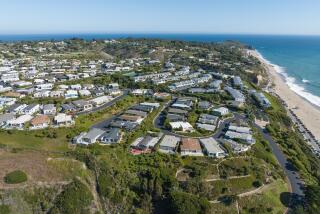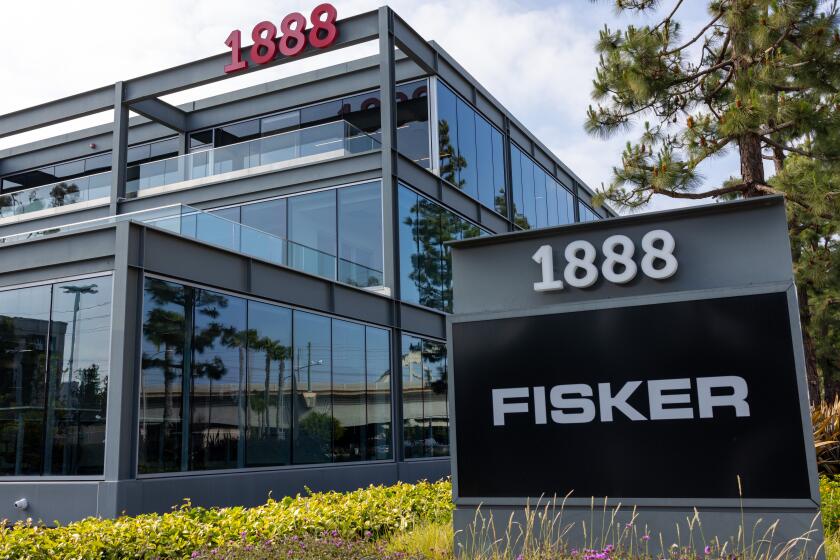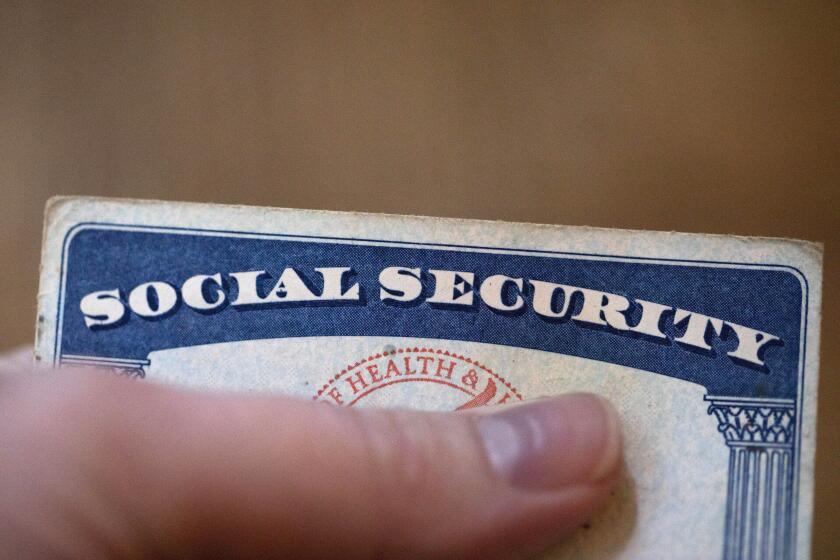Staying Sharp : Japanese Town Adjusts to Remain on the Cutting Edge of Tableware Industry
This small city, the fork and knife capital of the world, should have died three years ago.
Producing stainless-steel flatware in a nation that eats with chopsticks, Tsubame lived and, it was widely predicted, would die by exports. So, when world leaders decided in 1985 that the value of the Japanese yen must rise to reduce Japan’s trade surplus, the metal workers who had kept Tsubame going for decades considered their prospects for continued employment limited.
Today, after two rough years, Tsubame’s metal industry is prospering, producing more cutlery than ever--in fact, it is even short of labor, according to business leaders here. Like Japan itself, this small city near the remote Japan Sea coast refused to let its manufacturing sector deteriorate into a rust belt.
Tsubame’s rebound typifies Japan’s response to the high-yen challenge, a turnaround that may come to be seen as the second economic miracle of Japan’s postwar prosperity.
Despite a rapid doubling in the value of the yen that was expected to increase the price of Japanese exports and knock many firms out of business, Japan is once again racking up ever-growing surpluses--surpluses that enrich the nation and confound the world.
‘Things Going Well’
“Three years ago we were all thinking, what will be the future? Won’t we all have to quit? We really didn’t know,” said Masao Aiba, chief director of the Japan Metal Flatware Industry Assn. “But now the general trend is good. Things are going well.”
While many Americans accepted as inevitable an evolution from manufacturing to service, the Tsubame story shows how Japan believes it can have both. Tsubame succeeded with robots and advanced technology, but also with men like Kikuhei Sakatsume, 70, who still works 60 hours a week in an often bone-chillingly cold shed behind his house, hand-polishing table knives for 2.4 cents apiece. Far from the common image of Japan Inc., Sakatsume’s workshop, with its single gas stove and dented teapot, is one of 2,000 back-yard operations in Tsubame, population 45,000.
“This isn’t medium or small industry, this is micro-industry,” said Sakatsume, a slight man with gold teeth and gray fingernails. “But I’m 70 years old. I can’t do anything but keep going on.”
Tsubame and manufacturing cities throughout Japan continue to rely on hard work, but their rebound depended on much more: farsighted planning by government and business, cooperation among could-be competitors, timely government aid and postponement of profits to invest in productivity and quality. While diversifying into new, more expensive products, Tsubame’s metalworkers also refused to cede an inch of the cheaper end of the market to fierce competition from lower-wage countries like Korea and Taiwan.
And in Tsubame, as throughout Japan, manufacturers seemed almost to relish the adversity.
“Maybe to some extent they worked too hard to adjust,” said Mitoji Yabunaka, a Foreign Ministry official who tries to explain Japan’s surplus to the world.
Tsubame, a city of clay-tiled roofs and winding lanes, has been a metal-working town since a famous monk in feudal days advised its people to produce iron nails. During World War I, when the industries of more advanced countries built ships and guns, Tsubame began making flatware for export. Aiba, 66, said he remembers hammering out spoons by hand with his father.
By 1957, Tsubame’s success was sparking trade tensions with U.S. producers. Then, in the 1970s, the yen took its first upward jog from its historic level of 360 to the dollar toward the current level of 125.
“Even then, we understood this would be the trend of the coming years, and we designed countermeasures,” said Kiyoshi Ohashi, the flatware association’s managing director. “We have followed this plan step by step.”
The plan called for diversification into other metal products, in a carefully measured progression to higher technology. The plan--what Chamber of Commerce head Masaji Endo called the “strategic counter offensive”--took on new urgency in September, 1985, when finance ministers of the top industrialized nations agreed to push up the yen from its level of 250 to the dollar. Economists said U.S. products would become cheaper in Japan, Japanese products would become more expensive in the United States, and the trade imbalance would dwindle away.
For a time, it seemed to be working--at least in Tsubame. Seventy-five percent dependent on exports, the metal industry sunk into depression.
“It was a terrible time,” said innkeeper Ayako Notsuke, 49, who watched her business dry up with the flatware sales. “Those with no strength went bankrupt.”
U.S. buyers visited Tsubame, offering to buy at prices so low manufacturers could no longer accept. “So they went straight to Korea,” Endo recalled.
Sakatsume, the 70-year-old knife polisher, said he was happy to get one order every two or three days. He lived off savings, with some help from his salaried son in Tokyo.
But in the midst of depression, Tsubame’s businessmen were busy. They diversified to metal products less dependent on exports: tea kettles and medical instruments, car parts and mirrors, computer bases and golf-tee holders.
Today, no major metal company in the city relies solely on flatware, and the industry has lessened its dependence on exports to 63%, Endo said. But that remains high, so Tsubame concentrated on improving its competitiveness in flatware, too, despite the high yen.
On the low end, Endo said, companies bought robots and streamlined production, allowing Tsubame to dominate the market for cheaper goods in Africa and the Middle East.
On the high end, Tsubame followed the “value-added” strategy of Japan’s car makers, which have exported more and more expensive Sentras and Accords. It is a strategy that explains how Japan could import 617 million tons of goods in 1987, export 71.2 million tons and still wind up with an $80-billion surplus.
At Tsubame firms, flatware design and quality were upgraded, allowing stainless to compete with silver. Contracts were sought and won from the famous West German company Henkel, which now has all of its world-famous flatware produced in Tsubame, Endo said. A showroom on Madison Avenue allowed the companies to show their stuff while keeping up with changing customs and tastes.
Government officials gave advice on new products and technology and, more important, offered subsidies and low-interest loans as soon as the yen began to rise, allowing new investment at the bleakest time.
“I’m 66 years old and more than 40 years in this business, and I had never seen the government take such quick and drastic action,” Aiba said. “Without that, a lot of companies would certainly have gone out of business.”
Boom Helped
With government help, Tsubame built a sleek development center near the bullet-train station, showing off a stainless-steel peacock in rustling color and other local products in its tile-and-glass showroom. Seminars on new technology are held there “almost without interruption,” Endo said.
Japan’s booming domestic economy helped, too, beginning in late 1986. More recently, Tsubame was aided in its export wars by the belated appreciation of Taiwanese and Korean currencies, which put its chief competitors under a similar handicap, according to Masataka Minamisawa, who oversees metal household products for the Ministry of International Trade and Industry in Tokyo.
The upshot: Tsubame, after a slump, again produces more than half the world’s flatware, 720 million place settings a year, Endo said. And while income from flatware has declined in yen terms, income from new products has more than made up the difference.
Tsubame was helped by an almost universal understanding inside Japan of the challenge faced by export industries. “This is the era of structural change,” said innkeeper Notsuke. “Those who learn a new technology, their business can boom.”
Atsushi and Kazuko Takahashi were among those who learned a new technology. Like 70-year-old Sakatsume, the married couple working in their cramped and chilly shed do not appear high-tech. The flywheels of their two metal presses spin noisily, and the pedal-operated presses whomp down with a relentless force that explains why so many Tsubame residents are missing one or more fingers.
Takahashi said he realized that flatware alone would no longer support his family. With some retraining and new parts for their presses, the Takahashis can now make 25 to 30 different parts and objects, from ice tongs to kettle handles.
The Takahashis work Monday through Saturday, 10 hours each day; they don’t expect their son, now studying for university entrance exams, to take over their business. But Takahashi, 45, said diversification at least kept his business alive.
‘Can Survive’
“I think I can maintain it as long as my generation can work,” he said. “At least I can survive.”
As the tiny sweatshops disappear, larger companies pick up the slack, combining modern production methods with piecework for homemakers in suburban apartment complexes. Aiba said he remains worried about Tsubame’s future, but pleased with what it has accomplished so far.
“All the advanced countries, including the U.S. and Britain, still make tableware, but they scaled way back--to a tenth or less,” he said. “So how can Japan be the exception? From that point of view, I think we are doing pretty well.”
More to Read
Inside the business of entertainment
The Wide Shot brings you news, analysis and insights on everything from streaming wars to production — and what it all means for the future.
You may occasionally receive promotional content from the Los Angeles Times.










